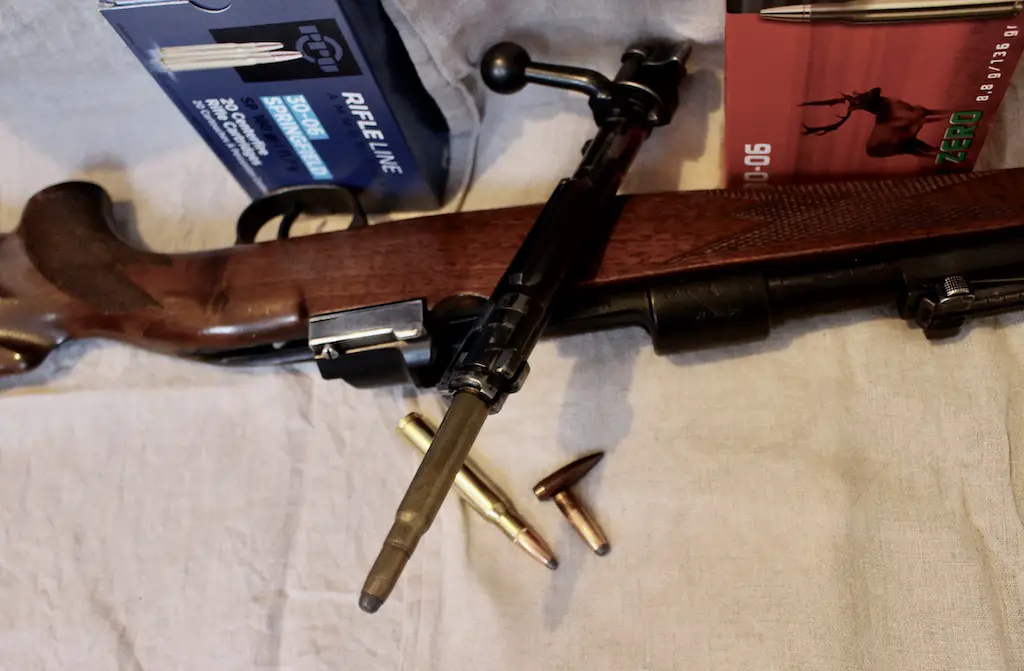In the realm of rifle calibers, the 8mm Mauser and .30-06 Springfield stand as titans, each with a deep-rooted history and a legion of enthusiasts. Both cartridges have served in some of the most significant military conflicts of the 20th century and continue to be cherished by hunters and sport shooters worldwide. This article aims to dissect these venerable calibers by examining their origins, ballistics, and field performance, offering a comprehensive comparison that highlights their respective strengths and applications.
Understanding the 8mm Mauser and .30-06 Origins
The 8mm Mauser, officially known as the 7.92×57mm Mauser, originated in Germany in 1905, evolving from a predecessor used since 1888. Developed by the Mauser company, this cartridge was designed to provide superior range and stopping power, setting a new standard for military rifle cartridges. Its adoption by the German military quickly made it a staple in European rifles and set the stage for its use in two world wars. The 8mm Mauser’s robust design and adaptability have contributed to its enduring popularity among military surplus enthusiasts and hunters.
In contrast, the .30-06 Springfield was crafted by the United States in 1906, emerging from a need to modernize military ammunition following the Spanish-American War. The .30-06, named for its .30-inch diameter and year of introduction, quickly proved its mettle, serving as the primary cartridge for the US military until the late 1950s. Its versatility and reliability in various firearms, from the iconic M1 Garand to bolt-action rifles, solidified its place in American firearms history. The .30-06 remains a favorite among hunters and long-range shooters due to its impressive performance and availability.
While both cartridges arose from military necessities, their histories diverged in terms of international adoption and civilian use. The 8mm Mauser found a global audience as a result of Germany’s extensive arms exports and influence, while the .30-06 became a symbol of American military might. Understanding these origins provides a backdrop to their ongoing legacy and use in the modern firearms community, where both continue to be celebrated for their historical significance and ballistic capabilities.
Ballistics Breakdown: Power and Precision Compared
When examining ballistics, the 8mm Mauser and .30-06 Springfield present distinct profiles in terms of velocity, energy, and trajectory. The 8mm Mauser typically fires a bullet weighing between 150 to 200 grains, capable of achieving muzzle velocities from 2,500 to 3,000 feet per second depending on the load. This results in a flat trajectory and effective energy transfer, making it particularly well-suited for medium to large game. Its stopping power and accuracy have made it a favored choice among European hunters.
In comparison, the .30-06 Springfield is known for its versatility in bullet weights, ranging from 110 to 220 grains. This flexibility allows shooters to optimize the cartridge for various applications, from varmint hunting to big game pursuits. With muzzle velocities ranging from 2,600 to 3,050 feet per second, the .30-06 offers a balance of speed and energy, delivering consistent performance at both short and long ranges. Its widespread use in competitive shooting highlights its precision and adaptability.
Both cartridges offer impressive ballistic performance, yet they cater to slightly different preferences and needs. The 8mm Mauser is often lauded for its simple, effective power and reliability, while the .30-06 is celebrated for its versatility and widespread availability. Ultimately, the choice between them often comes down to personal preference and specific shooting applications, with each offering unique advantages in terms of ballistics.
Field Performance: Real-World Applications Analyzed
In real-world applications, the 8mm Mauser and .30-06 Springfield have proven themselves in diverse environments and shooting scenarios. The 8mm Mauser’s robust performance in harsh conditions, such as dense forests and rugged terrain, underscores its reliability for European game hunting. Its effective range and ability to handle large game animals like moose and boar make it a staple among hunters who value power and precision.
Conversely, the .30-06 Springfield excels in a variety of North American hunting settings, from open plains and woodlands to mountainous regions. Its adaptability to different bullet weights allows hunters to tailor their ammunition choice according to the game size, whether pursuing deer or elk. The .30-06’s long-range capabilities also make it a preferred choice for precision shooters and competitive marksmen.
In military use, both cartridges demonstrated exceptional field performance, with the .30-06 being instrumental in both World Wars and the Korean War, while the 8mm Mauser was the backbone of the German infantry. Today, their legacy continues as modern hunters and sport shooters appreciate the blend of historical significance and practical performance these cartridges offer. Each excels in different aspects, providing options for those seeking specific attributes in their shooting experience.
In the showdown between the 8mm Mauser and .30-06 Springfield, there is no definitive winner—only champions in their own rights. The 8mm Mauser is a testament to German engineering and effectiveness, while the .30-06 Springfield showcases American ingenuity and adaptability. Both cartridges have transcended their military origins to become beloved staples in the hunting and shooting communities. For enthusiasts, choosing between these calibers is less about superiority and more about aligning with one’s shooting goals and historical appreciation. As such, both cartridges remain relevant and respected in the ever-evolving world of firearms.



